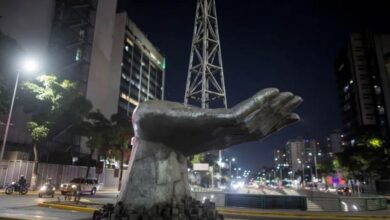Marien Luévano talks about flamenco with LatinAmerican Post
Listen to this article
Mexican choreographer and dancer spoke with LatinAmerican Post about flamenco and Hojas de Té
Leer en español: Marien Luévano habla de flamenco con LatinAmerican Post
After her show in the framework of the celebration of the International Encounter and Imaginary Surprises of Al Andalus in Mexico, we interview the dancer and choreographer Marien Luévano to learn more about this art and how it develops in a country like Mexico.
LatinAmerican Post: Where did your interest or passion for flamenco come from?
Marien Luévano: When I was fifteen I saw flamenco, I liked it a lot and then I started looking for classes. First I received classes in Cuernavaca and then in Tepoztlán, Morelos, where I lived at that time.
Read also: These are the most iconic flamenco singers
LP: How do you decide to make Hojas de Té?
ML: Hojas de Té was formed because Selene Gonzáles, one of my partners, wanted to open a space with Adriana David, another girl who is no longer with us. At that moment they call me to do the artistic axis and we are already seven years old.
In Hojas de Té, what we do all year long is "Flamenco Nights" on Saturdays, in addition to the regular classes we have with different teachers who rent the rooms and teach their classes.
What we sought with space when we did it, was to be something similar to the Amor a Dios in Madrid, a very old and emblematic study that has many classrooms where each teacher rents his classroom and teaches his classes, generating a center Flamenco
This is not a typical academy, what we do is that each teacher gives its classes. It can be anything, what has been given here has been Belly Dance classes and we have a Samba teacher who has been with us for two years.
LP: How is the logistics when preparing a flamenco show?
ML: Like a job, it is that: I have musicians, but Ulises Martínez has been working with me for a long time because we are also a couple, not only the violinist of the presentations but also the musical director. Then I have a concern, I tell him that I want to work on some concept and in turn, I also tell the singer Jose Diaz what I want to do. He sends me links of cantes, I show them to Ulises, he already knows in what tone they are then he composes something. I start to take improvisation exercises and I am generating a choreographic material.
LP: How accepted is this art in Mexico?
ML: In Mexico, flamenco has always been very well accepted, I believe that because it is with live musicians most of the time and here there is a lot of traditional music, it is sung and danced a lot. If I feel that flamenco is a deeper issue, although the lyrics are not well understood, the feeling is something that everyone gets.
LP: How many types of flamenco dance are there?
ML: The dance was born from the flamenco singing that has a family tree with several branches and on that the dances were carried out. Nowadays you can dance any flamenco stick, cante or style. There are some that are more cheerful, others that are sad, others that have a more solemn character, others that have a more romantic character and based on that the dance has a specific character.
LP: Depending on the type of flamenco, the dress?
ML: Yes. Although nowadays, already determined dance with clothes that had nothing to do for example forty years ago.
LP: What future plans do you have?
ML: Right now we have a flamenco gala that we have four years ago, where we do it in a larger format this year will be in the "Lunario" of the National Auditorium. On this occasion, we have two dancers from Spain, the first Pedro Córdoba, very important because he will give a course in Hojas de Té and the other is Antonio Rodríguez. We are going to dance with my partner Selene and Pilar Fernández who usually helps us in the coordination of social networks, the rent of rooms, besides that she teaches here like me. We are going to have the musicians who work with us in the flamenco night. A project that we have at the door and that is close enough.
LatinAmerican Post | Ana María Aray Mariño
Translated from "Marien Luévano habla de flamenco con LatinAmerican Post"






